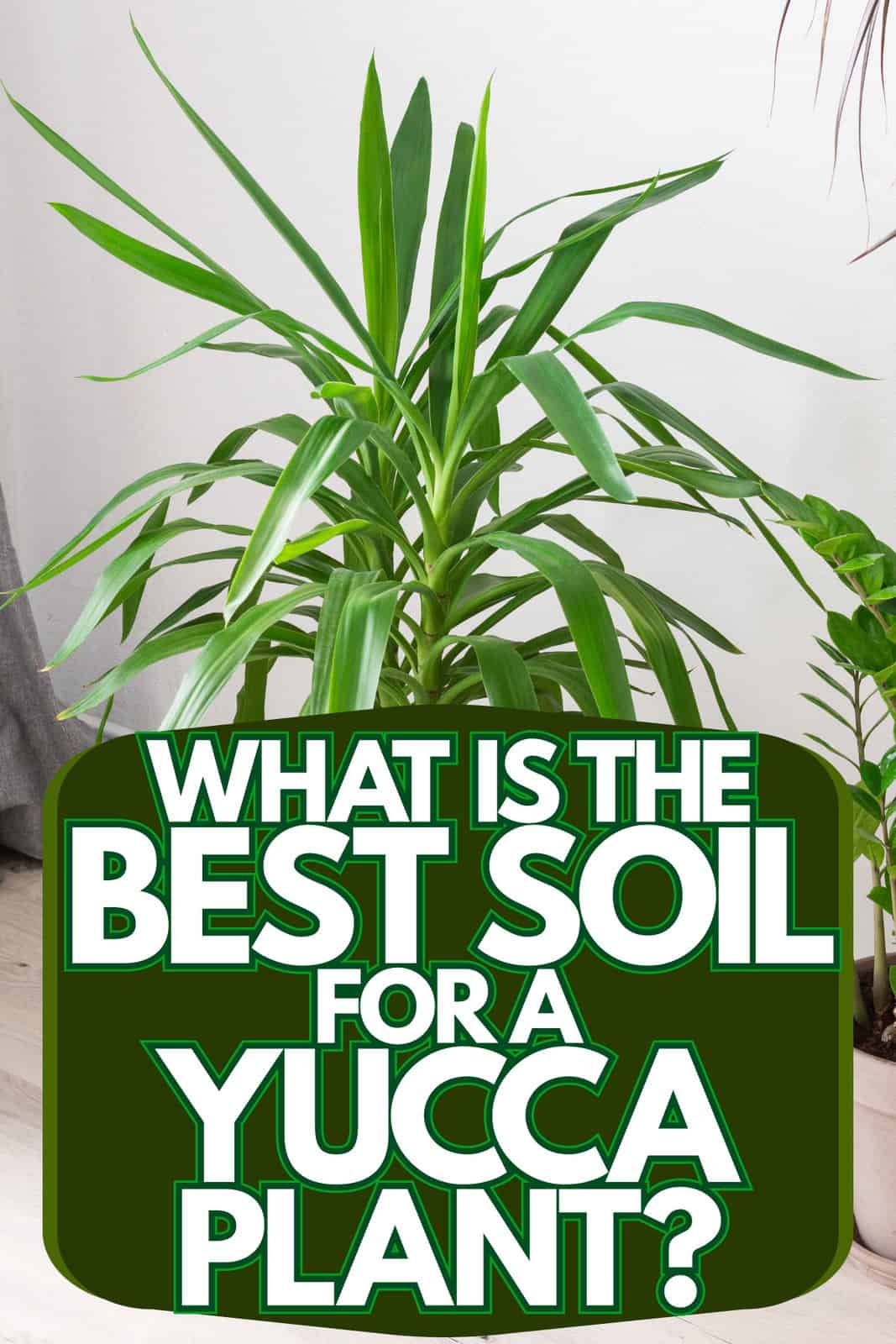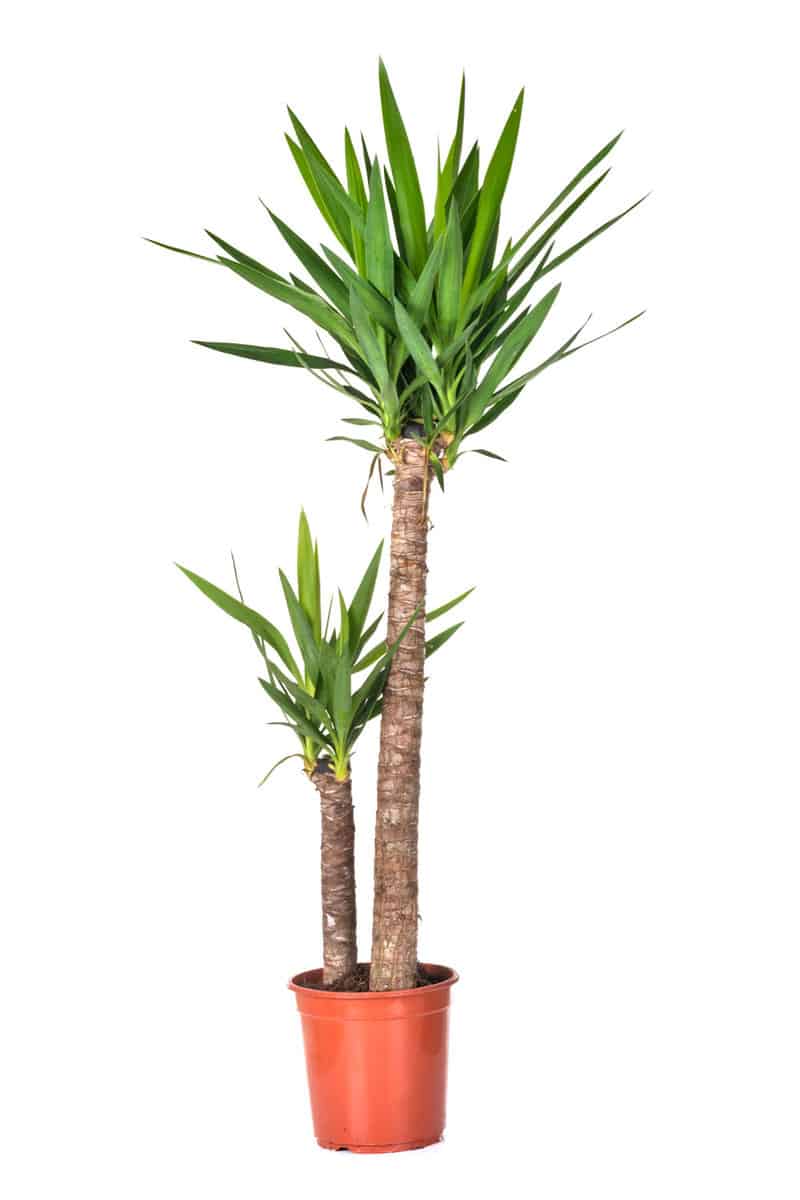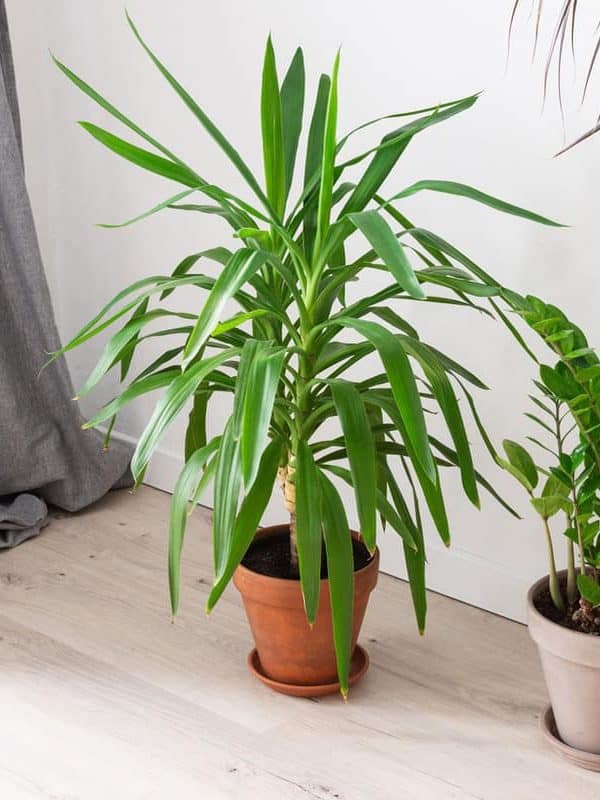Yucca plants are known for their low maintenance requirements, versatility, and their beautiful exotic leaves. If you are growing a yucca plant for the first time, you may wonder what the best soil is for the plant. We researched the best types of soil to use for yucca plants, and in this post, we will share this information with you.
Yucca plants don't require high-quality soil to thrive, but it does need to be well-draining. Also, the soil mix will need to be heavy enough to hold the Yucca upright. Adding a 3:1 sand and peat mix to your potting soil can help keep your yucca draining well and standing upright.
Yucca plants are great starter plants, especially when grown indoors. It's important to ensure that their soil is well-draining and disease-free so that they can thrive and grow. Please continue reading to learn more about the soil requirements for yucca plants and more information on maintaining them.

Best Soil for Yuccas
As mentioned earlier, yuccas don't require an expensive potting mix to thrive and grow. You can even make your own mix at home. Here's how. Take a wheelbarrow or garbage can to mix your potting media.
Next, fill the can up one-third of the way with perlite or sand. Then, fill the rest of the can up with your potting mix, and pour in one part of peat mix. Next, take a scooper and mix the media in the can.

And there you have it, the perfect mix for your yucca plant. The peat and sand will help add a bit of weight to the soil so that it is heavy enough to support the plant. The perlite will help to improve the soil drainage so that the peat and sand do not cause it to become waterlogged.
Soil Care
If you are planting yucca for the first time, it's important to ensure that the pot has excellent drainage capabilities. Remember, yucca plants are very susceptible to over-watering diseases such as root rot.
And even if you have the perfect mixture of sand, perlite, potting soil, a pot that doesn't drain well can still leave the roots in water for extended periods of time, leading to fungal issues.
After you water the plant, make sure that the water runs out of the pot drainage hole. It's helpful to wait a few minutes for the drainage pan to fill up and empty the water into the sink. This will prevent the roots from becoming waterlogged.
How Long Does A Yucca Plant Live?

On average, most yucca plants tend to live anywhere from 5 years to 7 years. However, they can live much longer than this. Also, the better you care for your yucca plant, the longer it will live.
When Should I Repot My Yucca Plant?
There's no need to hurry when repotting the yucca plant, as these plants perform best when the roots are a bit crowded in the pot. Many growers prefer not to re-pot the plant until there are clear signs that the plant needs it.
For example, if you notice the roots beginning to grow out from the topsoil, chances are it's time for the plant to be placed in a larger container. Also, if the plant starts to tip over because it is too top-heavy for the current container, you'll need to upgrade to a container that's a few inches bigger to accommodate it.
Another common reason to replant the yucca plant is when the soil becomes contaminated with fungal or other plant diseases, such as root rot. In which case, you'll need to ensure that you remove most of the soil from the roots of the plant and cut off any diseased root ends. It's best to do this with a clean pair of pruning shears or a utility knife.

Check out this pair of pruning shears on Amazon.
How Do I Repot A Yucca Plant?

Keep in mind that yucca plants can become pretty weighty, especially if they are over a year old. Before reporting your yucca plant, it's best to first plan out how you will go about it.
Be sure to purchase your pot ahead of time and make sure that it is big enough to support the plant. Let's look at the steps to re-pot your yucca plant.
1. Water the plant the day before
Water the yucca plant a day before the re-potting. Also, make sure that the new pot is no more than a couple of inches larger than the previous pot and has a drainage hole.
2. Fill the new pot
Fill your new pot halfway with a mixture of soil, sand, and peat moss.

Find out more about this peat moss on Amazon.
3. Remove the plant from its current pot
Next, lay the plant on its side and gently rock it back and forth to remove it from the container. It is also helpful to tap the pot's side, if it's flexible, to help remove the plant.
Keep in mind that the yucca plant roots may be wrapped around the inside of the pot. Next, slowly lift the yucca plant out of the pot and be careful not to damage the roots when placing the plants in the new pot. Also, you don't need to remove any dirt from the root ball when re-planting the yucca.
4. Re-plant the yucca
As you place the plant in the new pot, come up make sure that it is level and not leaning to the left or right. Then, fill the rest of the space with the remainder of your soil mix.
Be sure to gather the soil mix around the plant's trunk so that it is completely covered. Also, be sure not to leave any air pockets in the soil after re-planting the yucca plant.
To do this, slightly press down on the soil after you pour it into the pot. If not, you may notice that the plant's rootball will sink in after a few weeks, resulting in the plant appearing lopsided.
5. Water the plant
The amount of water that the plant will need initially will depend on the size of your yucca plant. Water the plants until the new topsoil is completely covered at least an inch or two with water.
As the water drains out, be sure to inspect the drainage hole of a new pot to ensure it is draining officially. After repotting the yucca plant, check the plant's soil every two to three days to ensure it is slightly damp. After two weeks, return to your regular watering schedule.

Learn more about this watering pot on Amazon.
6. Applying fertilizer
Unless your yucca plant is recovering from fungal disease or the issue, do not fertilize it for the first two months after repotting it.
Make sure that you see new growth in the plant before doing so. This is important to prevent the plant from experiencing transplant shock. After the transplant, it's best to let the plant rest for a while to de-stress.

Check out this fertilizer on Amazon.
Where Is The Best Place To Plant A Yucca?
To choose the ideal location for the yucca plant, find an area in your house that is sunny and bright, and well-ventilated. It's also helpful if the area has a well-filtered light source and has some indirect light.
Though the yucca plant can tolerate bright light, its leaves can become scourged if exposed to direct sunlight for too long. Ideally, you will want to place the plant near a west or south-facing window with a little shade.
Consider areas such as living rooms, entry areas, and dining rooms. Yucca plants can also work well in bedrooms or home offices, so as long as there is some light coming through from a window or patio door.
It's also helpful to turn your yucca plant once a week to ensure that it receives an even distribution of light across its foliage.
For example, suppose you notice that the leaves on one side of your plant grow longer or appear greener than the leaves on the other side of the plant. In that case, this could mean that the plant receives uneven lighting. Rotating the plan every week or every other day can help with this.
Wrapping Things Up

We hope this post has provided you with the information you were looking for about the best soil composition for yucca plants. The biggest takeaway is to make sure that the plant's soil is well-draining, heavy, and not waterlogged.
Yucca plants don't require much maintenance to thrive, but keeping the plant's soil in the best condition is imperative for its growth.
Before you go, be sure to check out our other posts:
